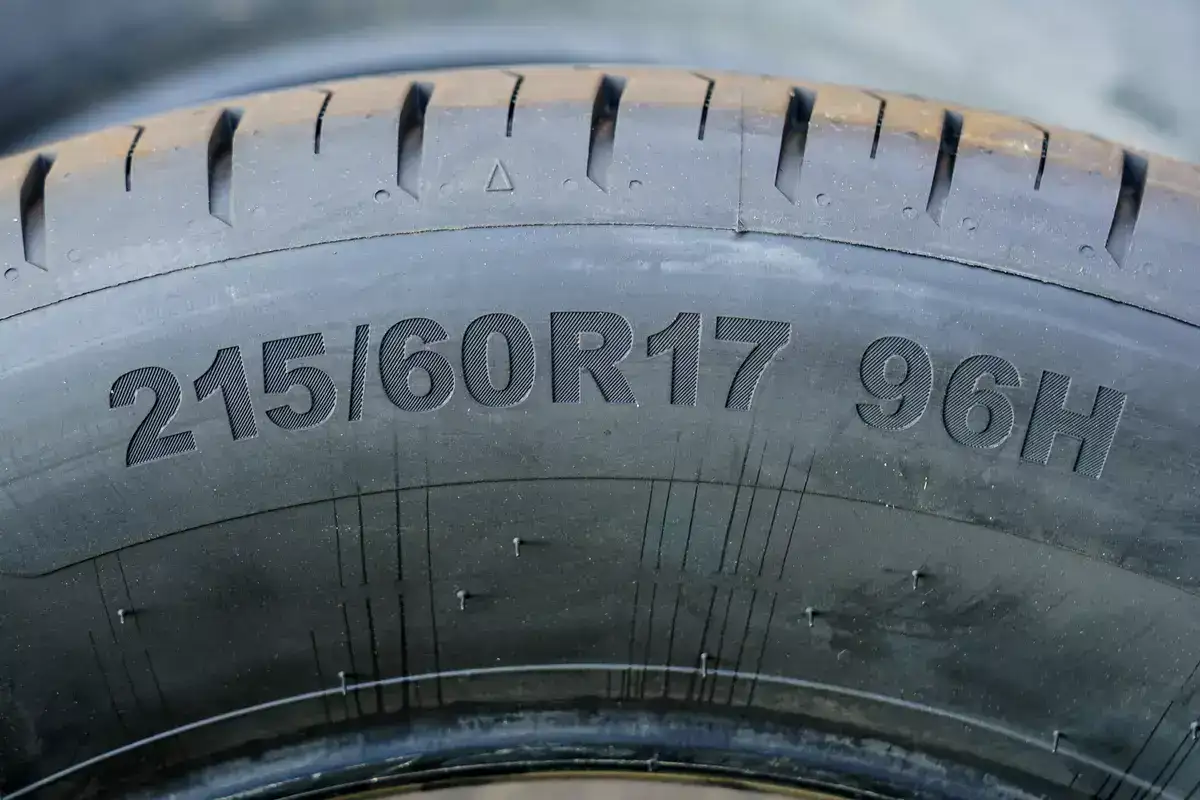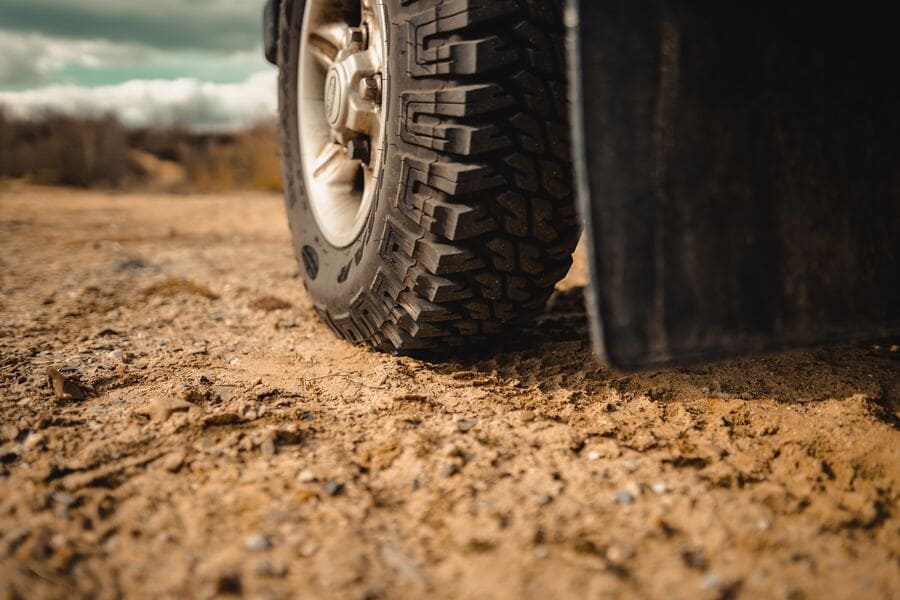>
Blog>
Which tyre is right for my car?Which tyre is right for my car?
Tyres are one of the things we change most frequently on a car. However, selecting the right one is crucial to keep your care safe and avoid paying high costs.
Typically, tyres last anywhere between 5,000 and 20,000 miles. So, getting to know which tyres suit your vehicle ASAP is critical
Today, we'll explain all the markings you'll find on a tyre, what they mean, and which ones you need to look out for. Ready to become an expert? Scroll down to learn more.
What tyres are right for my car? The basic tyre types
Before you do anything, get to know the basic tyre types. These will help you decide what tyres suit your vehicle and which you prefer the look of. Find the top categories below.
Warning! Never mismatch tyres on an axle pair. But more about this is below.
Low profile tyres
Low-profile tyres have a small sidewall, meaning the outer diameter is closer to the diameter of the wheel itself. These are often seen on cars with large wheel sizes, 17" and above.
Advantages of low-profile tyres
- The lesser sidewall bends less
- Tyres give better response when cornering
- Enable a larger alloy size while maintaining a reasonable outer diameter
- Great for performance and styling
- Enable more significant breaks to be fitted
Disadvantages of low-profile tyres
- Sometimes, it produces a harsher ride, as there's less rubber to cushion road bumps
- The alloy is closer to the road (less protection)
- Wheels are more likely to be damaged via kerbs
Learn about replacing your wheel bearings.
Run Flat Tyres
Large tyre manufacturer Michelin invented the "Run Flat" tyre to help vehicles drive on tyres without air pressure. While you shouldn't be doing this, it's vital if your tyre sustains a puncture and loses lots of air. These tires are convenient in motorway breakdown situations, as you must always continue driving to get to a safe position.
Modern tyres now use a different manufacturing method. The principle is the same: the vehicle can be driven for sometimes over 40 miles on a tyre with no air pressure.
Don't solely rely on run-flat tyres, though! You still need to be checking your tyre pressure regularly.
These tyres have been adopted as standard fitment on a few cars, mostly BMW and other German marques.
Advantages of run-flat tyres
- Allow you to continue driving without pressure
- Keeps you safe when you have a puncture
- Lessens stress during long journeys
- Reduced risk of the tyre coming off at the rim
- No need to change into a spare tyre on the roadside
Disadvantages of run-flat tyres
- They're typically 2-3 times more expensive than other tyres
- Difficult to change - some garages won't touch run-flats
- Many run flats can't be repaired
High load capacity tyres (HL tyres)
HL tyres support the weight of electric and hybrid cars. They provide a higher load-carrying capacity without changing the tyre size. You can usually spot a HL tyre by the "HL" prefix at the start of the tyre size information.
Advantages of HL tyres
- Improved safety for hybrid and electric cars
- Complies with relevant regulations
- Better braking performance
- Fewer maintenance costs as the tyres are specialised
- Better road stability
- Durability
Disadvantages of HL tyres
- Not for lighter vehicles
- Limited performance (not for off-road or winter driving)
- Not available everywhere
OE tyres
OE (Original Equipment) tyres are the tyres that come with your vehicle. Your manufacturer approved these, so you know they're compatible with your car.
Some manufacturers use brand-name tyres that are specialised for their vehicles. If this is the case for your car, you'll see an OE marking on your sidewall. It's best to use OE tyres if they're present in your car.
For example, Alfa Romeo cars have an AR marking, Hyundai has a HN marking, and Volvo has a VOL marking.
What tyre sizes fit my car? Standard tyre sizing and ratings
Knowing your tyre sizing is essential. But how do you work out which size you actually need?
You can review your current tyres or consult your owner's manual or service details.
Looking at tyre markings
Examining your tyre marking lets you know what tyres work for your car. If you've bought your car second-hand, note there's no guarantee that the previous owner will fit the right tyres.

Tyre width and profile
When investigating tyres, note that the first two numbers indicate the physical size of the tyre. You may find your owner's manual suggesting two or more tyre sizes for the same wheel size. This is normal, so make a note of both.
For example:
215 - This is the width of the tyre in millimetres.
60 - This is the profile, as a ratio of the width - e.g. 60% of 215
Diameter, construction and speed rating
Now, onto the second half of the lettering. This describes the following:
R - This means Radial, as opposed to 'Cross-Ply', which is the inner construction of the tyre. Apart from some vintage cars, all tyres are Radial.
17 - This is the diameter in inches
96 - Load rating: this is how much weight the tyre can hold. A rating chart is seen here.
H - This is the speed rating; high-performance cars with high speeds require higher-rated tyres. A speed chart is available here.
Checking the owner's manual or service records
Manufacturers offer different wheel options for each vehicle. So, your car registration number isn't the only information you need (have it handy anyway!). You must also understand tyre sizing and general tyre characteristics — especially if buying online.
This information is in your last car service record or the owner's manual. Never lose these documents!
Tyres for different climates
Did you know that you need special tyres for different seasons? That's right. The weather affects your wheels.
Climactic tyres are usually divided into summer and winter tyres. Winter tyres need better grip to navigate snow and ice. If you live in a region with severe winters, swap your tyres as the seasons change.
If you live in an area with occasional snow but primarily mild winters, you should opt for all-season tyres. You can use summer tyres all year round if you live somewhere with warmer winters (temperatures above 7°C).

Tyres and driving styles
Your driving style also affects your tyre choice. Take a moment to reflect on your driving habits and factor these into your tyre choice.
Quiet and comfortable rides
If you want tyres that provide a smooth ride with no road noise, look for tyres that are made for comfort and have lower speed ratings (e.g. H, S or T ratings). These don't focus as much on speed and give you more stability.
You should also skip aggressive tread designs. They can generate more noise.
Passionate drivers
If you're a keen driver and want to feel the curve of the road, opt for tyres with better steering precision or great handling. These are sometimes called "high-performance" tyres and give a stiffer but more precise feel.
Finding the right tyre for your car: Top FAQs
Still have a few questions? Don't worry. Here are the top FAQs about choosing the right tyre for your car.
When should I change my tyres?
You should change your tyres when the performance dips or there's visible wear. You should also change them after a puncture.
Pro Tip: It's illegal to drive on bald tyres. If your tread depth is less than 1.6mm, it's time to change.
If you don't enjoy changing tyres, picking a premium style will ensure they last longer. The price is higher, but you won't have to visit the garage as much.
Can I make my tyres last longer?
Yes and no. If you practise careful driving (e.g. gentle acceleration and braking), your tyres will wear slower. But ultimately, if you drive often, you'll wear your tyres.
Should I replace my tyres with a different size?
If your owner's manual gives the option of more than one tyre, you can use both. But weigh up the pros and cons of each size, as there may be genuine reasons for selecting one over another.
For example, choosing a tyre with a larger sidewall profile will increase give and improve overall ride quality. But you can also opt for a lower profile for better cornering feedback. When in doubt, discuss your options with an expert.
Other things to consider include:
- A larger width will increase grip and braking performance but possibly decrease fuel efficiency.
- A higher speed rating is currently required if you're planning to test out your car's top speed at a track, for instance.
- A higher load rating will be needed if you are thinking of towing a caravan or using all of your car's load-carrying capacity.
Should all four tyres on a car be the same size?
Yes. In an ideal world, you should have the same size, speed rating, load index, and tread pattern of tyres. A set of matching tyres optimises the performance and safety of your drive.
Of course, sometimes you'll need to go for a mismatched tyre (e.g. using a spare in an emergency). But this should be avoided if possible. Mismatched tyres make you a danger to yourself and other drivers.
Also, never mismatch tyres on an axle pair. Different sizes and tread patterns can lead to poor grip, an uneven drive, and stress on the axle system. You'll also have less control on wet or loose ground.
Do good tyres make a difference?
Yes, good tyres do make a difference. Expensive tyres can upgrade your driving experience. However, you don't need to splurge to feel this difference. Instead, changing your tyres regularly will provide a safe and comfortable drive — even if you opt for budget-friendly tyres.
What pressure should my tyres be?
You can find your vehicle's recommended tyre pressure in the owner's manual. It may also be printed on the sill of the driver's door or inside the fuel tank flap. Note that the recommended tyre pressure might differ for the front and rear tyres!

The takeaway
Selecting the right tyres for your car is essential, so don't put it off! Hopefully, this quick guide has pointed you in the right direction. Remember to check your user manual and previous tyre type. If unsure, always consult a professional before selecting any old tyre set.
Want some expert assistance? Spread the cost of tyres and other car maintenance bills. Apply for a credit limit of up to £5,000 and see dependable dealerships in your area with Bumper car repair finance.
Author - Joseph Law
Joseph has been writing about cars for over seven years and writing for Bumper for over two, blending his passion for automobiles with a talent for storytelling.
Joseph has written about engineering and cars for Autozilla, Komaspec, and several engineering manufacturers. When he's not writing or tinkering with one of his five cars, Joseph dreams of owning an Alfa Romeo 33 Stradale.
Related Posts